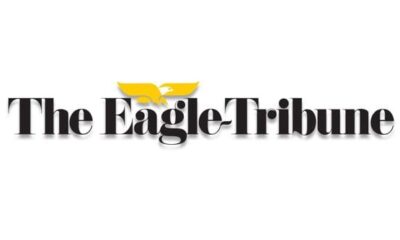Technology
DITA Transforms Technical Communication with Diverse Perspectives

The Darwin Information Typing Architecture (DITA) has become a pivotal standard in technical communication, particularly for organizations looking to enhance their documentation processes. Developed by IBM, DITA utilizes an XML-based framework that emphasizes a modular approach to content creation and management, allowing for efficient production of high-quality documentation tailored to different audiences.
Understanding DITA: Core Features and Functionality
To appreciate the advantages of DITA, it is essential to grasp its core functionalities. At its foundation, DITA promotes the creation of reusable content modules, or topics. These topics can be managed independently while being integrated seamlessly into various documents. This modular design fosters “topic-based authoring,” where content developers create and maintain chunks of information that can be repurposed across different documentation sets.
Each topic within DITA serves a specific function, such as concept, task, or reference, and can be reused as needed. This flexibility reduces redundancy and empowers organizations to produce documentation that is both comprehensive and concise.
Leveraging DITA Perspectives for Tailored Content
A standout feature of DITA is its ability to accommodate multiple perspectives, enabling technical communicators to align their documentation with the unique needs of their audiences. The following perspectives illustrate how DITA enhances content relevance and accessibility:
1. **Contextual Perspective**: This perspective emphasizes the specific scenarios in which content will be utilized. Understanding context is vital in technical communication. With DITA, authors can develop content that responds to particular user environments or use cases. For instance, a software manual could include tailored topics for installation, troubleshooting, and advanced configuration, ensuring that users receive information pertinent to their situations.
2. **Audience Perspective**: This perspective addresses the varying needs, knowledge levels, and preferences of different user groups. DITA allows for the creation of diverse content strands that cater to specific audiences, such as end-users, administrators, or technical support staff. By employing conditional text, authors can include or exclude certain information based on audience type, ensuring comprehensive service without overwhelming any segment.
3. **Functional Perspective**: Organizations can utilize the functional perspective to focus on product features and functionalities. DITA’s topic types, such as “task,” “reference,” and “concept,” help organize information around functional attributes, facilitating quicker information retrieval for users. For example, an onboarding guide for new software may include tasks for initial setup, reference material on system requirements, and conceptual explanations of core features, streamlining the learning experience.
4. **Localization and Globalization Perspective**: In an increasingly interconnected world, accommodating a global audience is essential. DITA supports localization and globalization efforts through its structured and modular nature, allowing for easy translation and adaptation of content to meet cultural and linguistic needs. Additionally, DITA’s metadata capabilities enable authors to embed localization attributes within topics, ensuring that translated content remains relevant across different regions.
5. **Technology Perspective**: This perspective addresses the technical tools used to deliver and manage DITA content. Whether utilizing a Content Management System (CMS), publishing engine, or translation tools, selecting appropriate technologies can significantly enhance the effectiveness of DITA. Organizations can implement tools that support DITA’s XML architecture, ensuring smooth integration of content workflows and precise performance analytics.
In summary, the multifaceted nature of DITA allows organizations to create tailored, relevant, and accessible documentation that caters to varied audience needs. By understanding user contexts, addressing specific requirements, and navigating localization challenges, DITA provides a robust framework for effective technical communication.
As the landscape of technical documentation continues to evolve, adopting DITA’s diverse perspectives will be critical for organizations aiming to deliver high-quality, efficient content. Investing in DITA not only enhances documentation strategies but also leads to greater user satisfaction and engagement.
-

 Technology5 months ago
Technology5 months agoDiscover the Top 10 Calorie Counting Apps of 2025
-

 Health2 months ago
Health2 months agoBella Hadid Shares Health Update After Treatment for Lyme Disease
-

 Health3 months ago
Health3 months agoErin Bates Shares Recovery Update Following Sepsis Complications
-

 Technology4 months ago
Technology4 months agoDiscover How to Reverse Image Search Using ChatGPT Effortlessly
-

 Technology1 month ago
Technology1 month agoDiscover 2025’s Top GPUs for Exceptional 4K Gaming Performance
-

 Technology2 months ago
Technology2 months agoElectric Moto Influencer Surronster Arrested in Tijuana
-

 Technology5 months ago
Technology5 months agoMeta Initiates $60B AI Data Center Expansion, Starting in Ohio
-

 Technology5 months ago
Technology5 months agoRecovering a Suspended TikTok Account: A Step-by-Step Guide
-

 Health4 months ago
Health4 months agoTested: Rab Firewall Mountain Jacket Survives Harsh Conditions
-

 Lifestyle5 months ago
Lifestyle5 months agoBelton Family Reunites After Daughter Survives Hill Country Floods
-

 Technology4 months ago
Technology4 months agoHarmonic Launches AI Chatbot App to Transform Mathematical Reasoning
-

 Technology3 months ago
Technology3 months agoUncovering the Top Five Most Challenging Motorcycles to Ride




















